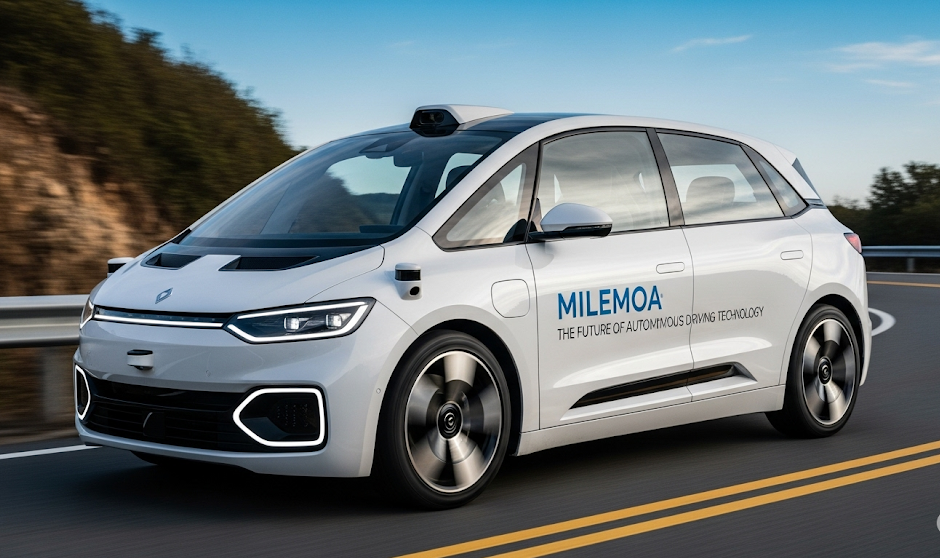Introduction to Milemoa
Autonomous driving technology has revolutionized the transportation industry, and Milemoa stands at the forefront of this innovation. As a cutting-edge self-driving technology, Milemoa promises safer, more efficient, and environmentally friendly mobility solutions.
This article explores Milemoa in depth—its features, benefits, challenges, and future prospects. Whether you’re a tech enthusiast, a potential investor, or simply curious about the future of transportation, this guide provides valuable insights into why Milemoa is a game-changer.
What is Milemoa?
Milemoa is an advanced autonomous driving system designed to enhance vehicle safety, reduce human error, and optimize transportation efficiency. Unlike traditional self-driving technologies, Milemoa integrates artificial intelligence (AI), machine learning (ML), and real-time data processing to deliver a seamless driving experience.
Key Features of Milemoa
-
AI-Powered Navigation – Uses deep learning algorithms to interpret road conditions, traffic signals, and pedestrian movements.
-
Real-Time Data Processing – Continuously analyzes sensor data to make split-second driving decisions.
-
Enhanced Safety Protocols – Equipped with collision avoidance systems and emergency braking.
-
Adaptive Learning – Improves performance over time by learning from past driving experiences.
How Does Milemoa Work?
Milemoa operates through a combination of sensors, cameras, radar, and AI-driven software. Here’s a breakdown of its functioning:
1. Sensor Integration
-
Cameras – Capture real-time images to detect traffic signs, pedestrians, and obstacles.
-
Radar & Ultrasonic Sensors – Monitor vehicle speed, distance from other cars, and blind spots.
2. AI & Machine Learning Processing
-
The collected data is processed by neural networks that predict possible hazards and adjust driving behavior accordingly.
3. Decision-Making & Control
-
The AI makes decisions such as accelerating, braking, or changing lanes based on real-time analysis.
-
The vehicle’s control system executes these commands smoothly, ensuring passenger safety.
Benefits of Milemoa Autonomous Driving
Milemoa offers numerous advantages over traditional driving and even other autonomous systems.
1. Improved Road Safety
-
Reduces accidents caused by human errors like distracted or drunk driving.
-
Predicts potential collisions and takes preventive measures.
2. Increased Fuel Efficiency
-
Optimizes acceleration and braking patterns to save fuel.
-
Reduces traffic congestion through smart routing.
3. Accessibility for All
-
Enables elderly and disabled individuals to travel independently.
-
Provides reliable transportation in areas with limited public transit.
4. Reduced Environmental Impact
-
Promotes electric and hybrid vehicles, lowering carbon emissions.
-
Minimizes unnecessary idling and stop-and-go traffic.
5. Cost Savings for Consumers & Businesses
-
Lowers insurance premiums due to fewer accidents.
-
Reduces fleet management costs for logistics companies.
Challenges Facing Milemoa
Despite its potential, Milemoa faces several hurdles before achieving widespread adoption.
1. Regulatory & Legal Concerns
-
Governments are still developing laws for liability in self-driving car accidents.
-
Different countries have varying regulations, complicating global deployment.
2. High Development Costs
-
The technology requires expensive sensors, AI infrastructure, and testing.
3. Public Trust & Acceptance
-
Many people are skeptical about relying on AI for driving.
-
High-profile accidents involving autonomous vehicles have raised safety concerns.
4. Cybersecurity Risks
-
Autonomous systems are vulnerable to hacking and data breaches.
-
Ensuring robust encryption and security protocols is essential.
Milemoa vs. Other Autonomous Driving Technologies
How does Milemoa compare to competitors like Tesla Autopilot, Waymo, and Cruise?
| Feature | Milemoa | Tesla Autopilot | Waymo | Cruise |
|---|---|---|---|---|
| AI Learning | Adaptive ML | Supervised Learning | Reinforcement Learning | Hybrid AI |
| Sensor Tech | LiDAR + Cameras | Cameras Only | LiDAR + Cameras | LiDAR + Radar |
| Deployment | Mixed Traffic | Highway Focus | Geofenced Areas | Urban Rideshare |
| Safety Record | High | Moderate | High | Moderate |
Mile moa stands out due to its adaptive learning and multi-sensor approach, making it more versatile in diverse driving conditions.
The Future of Mile moa
The future of Mile moa looks promising, with several developments on the horizon:
1. Expansion into Ride-Sharing & Logistics
-
Partnerships with ride-hailing and delivery services to deploy autonomous fleets.
-
Reducing labor costs in trucking and last-mile delivery.
2. Integration with Smart Cities
-
Synchronizing with IoT-enabled traffic systems for smoother urban mobility.
-
Reducing traffic jams through AI-optimized routing.
3. Advancements in AI & Hardware
-
More efficient LiDAR and cheaper sensors will lower production costs.
-
Quantum computing could enhance real-time decision-making.
4. Global Adoption & Legislation
-
More countries are expected to legalize fully autonomous vehicles.
-
Standardized safety regulations will boost consumer confidence.
Conclusion: Why Mile moa is the Next Big Thing in Mobility
With its AI-driven intelligence, superior safety features, and eco-friendly benefits, it has the potential to transform how we commute.
While challenges like regulation, cost, and public trust remain, continuous advancements in AI and sensor technology will likely overcome these barriers. As Mile moa evolves, it could pave the way for a safer, smarter, and more sustainable transportation future.
Are you ready for the self-driving revolution? Mile moa is leading the charge—stay tuned for what’s next!
